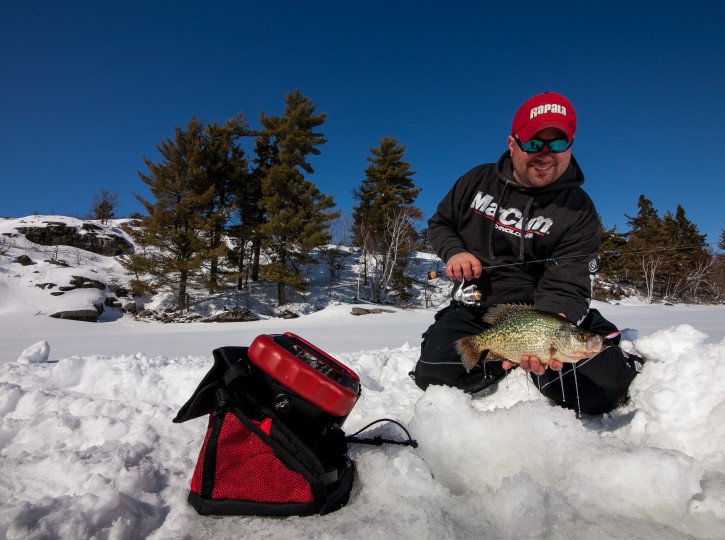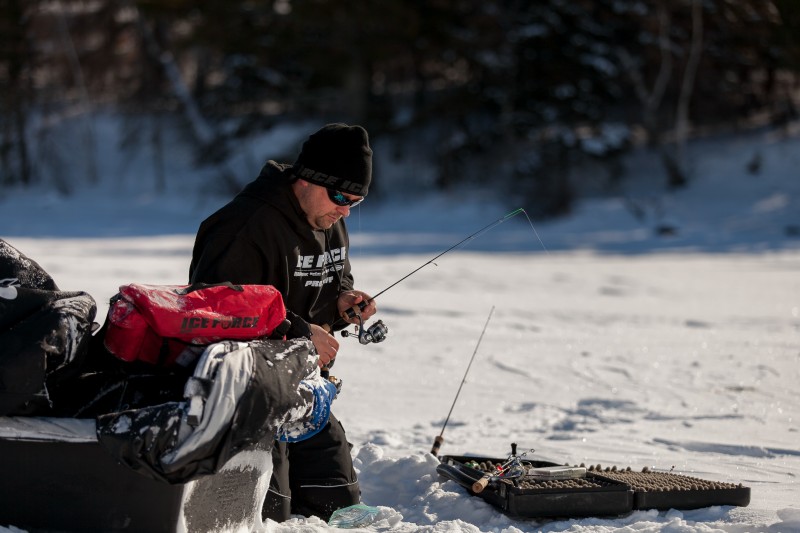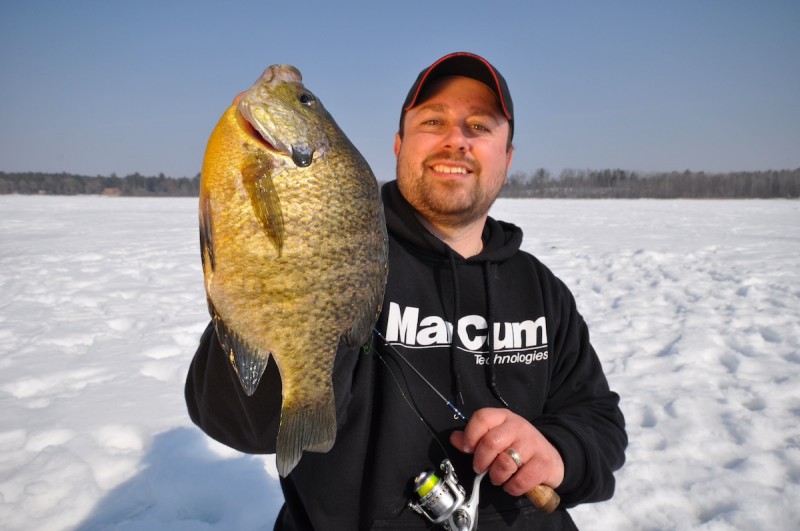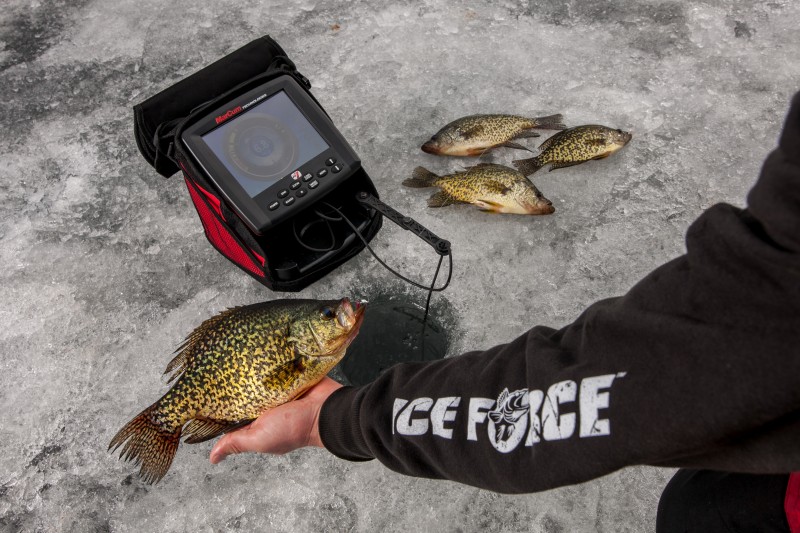My favorite first ice bites are for gills & crappie, mostly because the panfish frequent the small natural lakes that freeze up first. There are parts of the state that you can fish first, and most of them can be tracked down on a glacial geology map. Most of the midwest’s best small, natural panfish water-bodies are kettle lakes that settled in the various portions of ground and end moraines from the last glacial period. Especially the ones in glacial recession areas, as they tend to be in low-lying areas. As cool, late-fall air sinks into these low and small lakes at night, you have the perfect conditions to create “first-ice.” It just so happens, that these lakes can hide in the shadows of larger lakes, and because of their glacial origin are typically in areas that are littered with lakes that have good fishing opportunities. The next best part of them, is that they’re often simple in terms of their structure. Most are single-basin lakes, where fish congregate on inside or outside turns of the first (and often-only) contour break. Good weed growth in adjacent shallow areas, makes these “first-break” fish even more predictable in location, with 10-12 foot depths being common starting points, depending on water clarity and weedline depth.
That said, even remote panfish bites can see some traffic, so getting out there before bastions of ATVs and snowmobiles, and especially permanent houses, is really important. Big gills especially are sensitive to overhead traffic in a big way, as proven to me time and time again by watching fish react to overhead noise while studying them on camera. Of course, safety is topic #1 first ice, as there can be a great deal of variability both within the same lake, and among different lakes in the same area. An ice-chisel is a necessary tool, but you can put your auger to work for you as well. Make sure when drilling you pick an area away from ice-deformities, big cracks, and ice-stacks. Find good ice, cut a hole and actually measure. It’s amazing to me how much good 4 -8” ice that exists out there before people ever dream of dropping a line. In some seasons though, ice piles on fast, so that first-ice time period is really a time to strike fast.
Take that same approach to your fishing style. You shouldn’t hover on one lake too long or hard, especially if not catching fish, as this is prime-time. Really fish aggressively, as just about all species are on the prowl. This isn’t a time to “swiss-cheese” a small single location, it’s a time to fish several different locations, rather than investing more time in individual spots. Larger lure offerings, esp. tungsten tipped with plastic allow you to fish fast and get down into the zone while wasting little time. I feel fish will come from a greater distance this time of year, so it’s not a bad idea to fish small spoons for max vibration and flash to draw them in. Always have some tungsten rigged up and ready to drop on fish that charge hard to larger spoon offerings but won’t commit. This time of year, you’ll often have those exact same fish come half-way up the water column to take the only slightly smaller jig offering.
Crappies are some of the more predictable fish in terms of their late-fall to winter locations, which make them a prime candidate for ice-scouting from the boat during the late-fall period. Just before turnover, throughout, and after, these fish are making their way to basin areas of lakes where they’ll spend much of the rest of the winter. Especially if you have favorite summertime crappie haunts, the good news is that these fish don’t often travel all that far, migrating off of the shorelilne deep weed breaks straight out onto the next edge or drop. Often, this is in 25 FOW plus, but some of my favorite winter crappie locations are tiny deepwater bays or small lakes attached to the main lake. The best part about using a boat to scout these fish, is that you can literally shave hours off of the search as compared to ice-searching for them. For many of these smaller deepwater basins, a few passes with the boat electronics will tell you everything you need to know about the upcoming crappie fishing in months to come. Just to be sure, it’s best to do this after turnover, as that’s a time of great flux within the lake itself. Also, provided water clarity is reasonable, I’ll almost always drop a camera to make sure that the species I’m marking are actually crappies. I’ve been fooled by everything from white bass to tullibees when not confirming on the camera!




Joel – Just saw the story about the 50 ft crack on Winnie. I have a floating suit but I’d rather not try it out personally. Any tips on ice conditions that you can share? I scout locals to see what the status is of ice if I can but as we all know often its a guessing game.
Hey Doug – I haven’t been to Winnie yet this year, and so much of that can be extremely localized. Usually you don’t see big gaps open up like that this time of year, but anything’s possible with some wind and pressure ridges. Until things settle down, it might be a good idea to stay on the resort roads, and look to them for advice on conditions. They’re on it everyday, and especially on those larger bodies of water it can change everyday. I’ve got several stories about cracks/heaves being in a completely different condition from heading out to going back for the day. It’s often a good idea to leave early enough to have light while you exit the lake!
Joel
Joel: Any good early season lakes in the Mankato, MN area? I live in North Iowa and our options are limited.